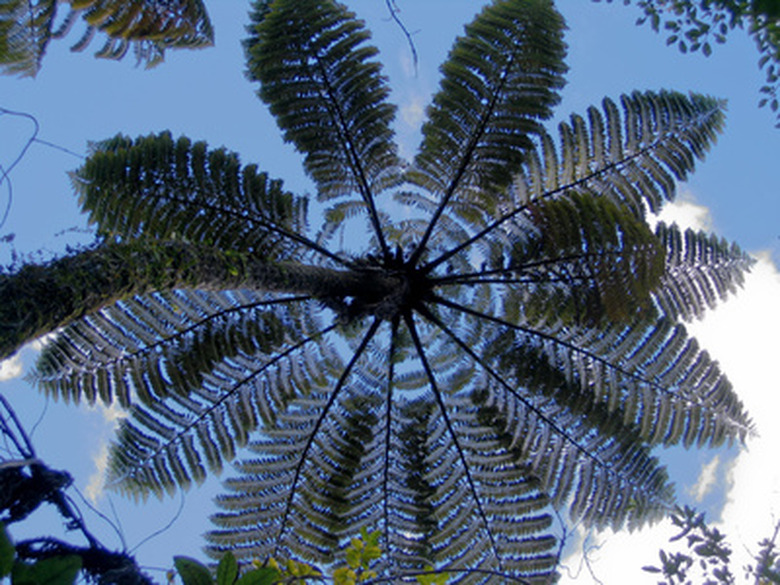Tree Fern Diseases
We may receive a commission on purchases made from links.
Tree ferns (Sphaeropteris cooperi) are so named because they grow on one trunk, like a tree. In fact, these ferns are not only shaped like trees, but they can grow just as large as trees do, reaching heights of 30 feet or more, according to the University of Florida. While established trees are usually disease resistant, newly planted trees can suffer from a number of common diseases.
Crown Rot
Crown rot is a fungal disease that can kill a young tree fern from the crown downward. The fungus, which spreads on water, infects the newly emerging fronds and works its way down the tree. This disease often arises when newly planted tree ferns are watered from above rather than at ground level, according to the book "Tree Ferns." By the time the home gardener notices the primary symptom–deformed fronds–it is often too late to save the tree.
- Tree ferns (Sphaeropteris cooperi) are so named because they grow on one trunk, like a tree.
- This disease often arises when newly planted tree ferns are watered from above rather than at ground level, according to the book "Tree Ferns."
Avoid crown rot by making sure you water the tree at the ground level. In addition, make sure there is no way for water to collect in the crown of the fern tree Water may land in the fern's crown from the dripping leaves of a taller, nearby tree, for example.
Root Rot
There are several different types of soil-borne fungi that can cause root rot, including Rhizoctonia, which is often caused by overwatering, and the deadly Armillaria, which can live undetected in the soil for years, according to the book "Tree Ferns." These fungi destroy the roots of the tree, causing it to be unable to absorb nutrients or water. In many cases, the tree appears to wither and die rather suddenly. Other times, the fern tree may slowly turn yellow. The fruiting bodies of the fungi (mushrooms) may appear on the soil around the base of the tree.
- Avoid crown rot by making sure you water the tree at the ground level.
- In addition, make sure there is no way for water to collect in the crown of the fern tree Water may land in the fern's crown from the dripping leaves of a taller, nearby tree, for example.
As with crown rot, prevention is the best way to control this disease. Do not overwater tree ferns, but, rather, water slowly and deeply only when needed, which is usually when the top few inches of soil feel dry to the touch. In some cases, drenching the soil with fungicide may prevent the disease, but by the time symptoms appear, the roots of the tree fern are usually already destroyed.
Pathogens
Scientists suspect that a pathogen is causing the sudden dieback (signified by a tree that dies from the outermost parts inward) of tree ferns in many areas around the world, as noted in "Tree Ferns." This pathogen is thought to travel on the body of the passion-vine hopper (Scolypopa australis). This insect pest burrows into the wood of the fern tree and sucks the sap, thus allowing the pathogen to gain entry into the sapwood of the tree, where it will eventually cause the tree to die. The only remedy for this disease is to control for burrowing insect pests with regular applications of insecticide.
- As with crown rot, prevention is the best way to control this disease.
- In some cases, drenching the soil with fungicide may prevent the disease, but by the time symptoms appear, the roots of the tree fern are usually already destroyed.
